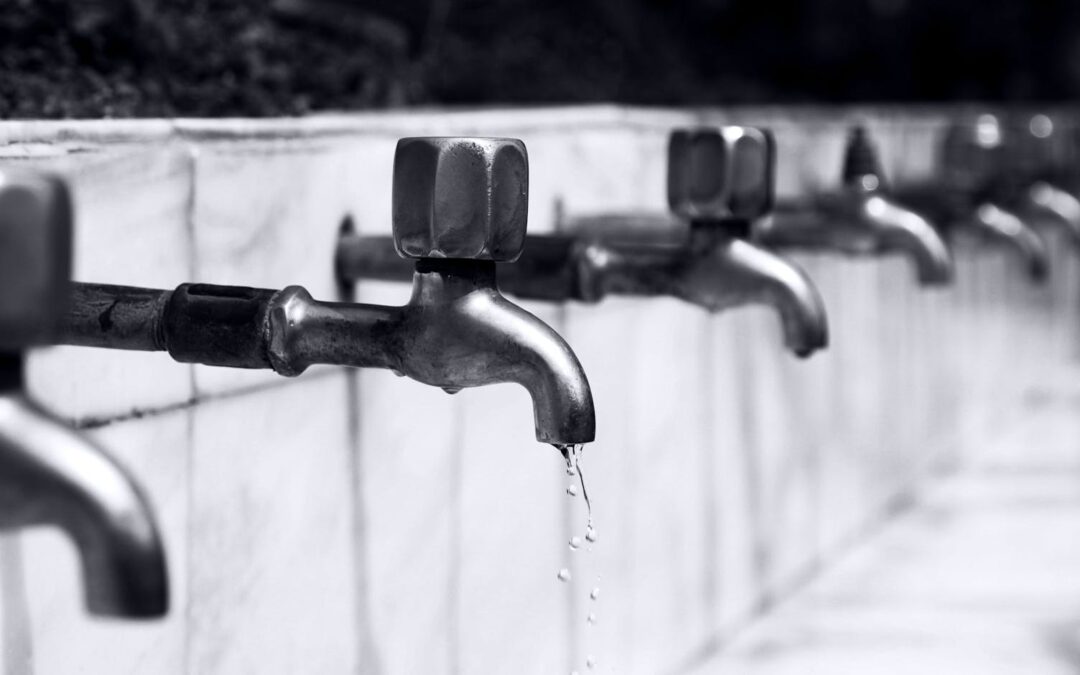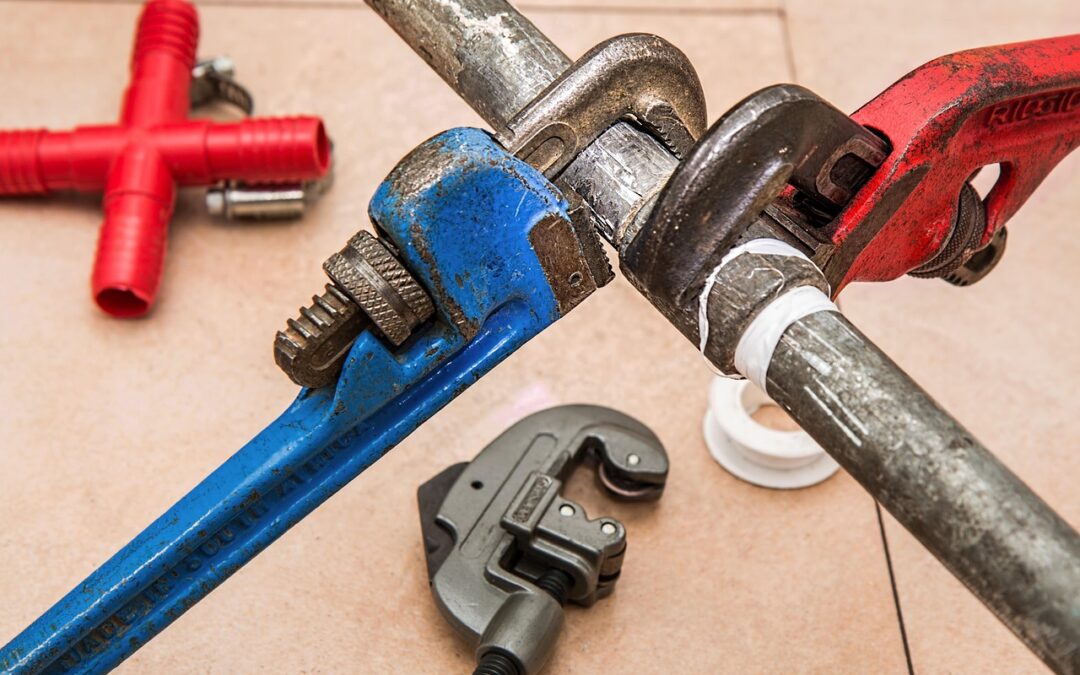If you’re like most homeowners, you probably don’t give much thought to your sump pump until there’s a problem. And then it can be a real emergency!
A sump pump is an essential part of any basement waterproofing system, and it’s important to know what’s involved in sump pump installation before you need one. So what is a sump pump, and how do they work?
This blog post will discuss what sump pumps are, how they work, and the tools you need for sump pump installation.
Schedule Service Online
Get a free estimate so you know what you're signing up for
"*" indicates required fields
For Emergency Services Call: 410-255-9300
What Is A Sump Pump?

A sump pump is a device typically installed in the basement of a home to help prevent flooding issues by pumping out groundwater that has infiltrated the area. Sump pumps collect water from drains or other sources and then pump it away from the property before it can cause any damage. Sump pumps come in two main types—submersible sump pumps and pedestal sump pumps.
How Does A Sump Pump Work?

Sump pumps use a motor to create suction, pulling water through an inlet pipe. The sump pump will send the water out through a discharge pipe and away from the home. It’s important to pay attention to the sump pump and ensure it is working properly, as a sump pump that isn’t functioning correctly can lead to serious flooding in your basement.
Installing sump pumps can help reduce the risk of flooding your basement or crawl space. Sump pumps can protect your home and belongings from water damage by draining away excess water.
It can also help keep basements dry by removing water from sump pits and redirecting it away from your home, reducing the risk of mold and mildew buildup in your basement, which can cause health problems for you and your family and increase the energy efficiency of your home.
Types Of Sump Pumps
Sump pumps come in a variety of sizes and configurations, with the most common being submersible sump pumps and pedestal sump pumps.
Submersible Sump Pump
Submersible pumps are designed to be placed in the sump pit and submerged in the sump water. They are typically more powerful and efficient than pedestal pumps and can handle larger volumes of water. They are typically used in sump pits deeper than 18 inches and handle large volumes of water.
Pedestal Sump Pump
Pedestal pumps are installed above the sump pit and feature a motor mounted on top of a vertical pole. These sump pumps tend to be less powerful and more affordable than submersible sump pumps. They can also be used in sump pits as shallow as 12 inches deep, making them ideal for sump pits that are too shallow for submersible pumps.
Tools Required For Sump Pump Installation

When installing a sump pump, you will need certain tools and materials. These include:
– A sump pit or sump basin: This container holds the sump pump and should be installed in the lowest area of your basement.
– A sump pump: You will need to choose either a submersible sump pump or a pedestal sump pump based on your property’s location and needs.
– PVC pipe: This is used to connect the sump pump to the outlet pipes for draining water away from the home.
– A sump liner: This is a flexible plastic sheet that lines the sump pit and helps keep it free from clogs and other debris.
– Gravel: This will fill in around the sump pit and pump for added protection.
– A sump pump switch: This device will turn the pump on and off when it needs to be used.
– Hose clamps and fittings: These are used to securely attach the sump pump and discharge pipes.
– Glue or cement for connecting pipes: This ensures that all pipes and fittings are securely connected.
– Hole saw bit: A hole saw is used to cut the sump pit holes in your basement floor for the pump installation.
–Check valve: This prevents water from flowing back into the sump pump.
–Sledgehammer, drill, or concrete saw: These tools make holes for the sump pump installation.
–Electric drill/driver: This is used to attach the sump pump switch and motor.
–Paving stone: This is used to hold the sump pump in place.
How To Install A Sump Pump

Installing a sump pump is a challenging task, and it should be done by someone with experience in plumbing and pump installation. Here is the sump pump installation process:
1. Select A Location And Prepare The Sump Pump Basin
Select the sump basin location and take measurements to determine the sump pump size you will need. Dig out the sump pit, ensuring it is at least 12 inches deep and wide enough for your pump and liner. Position the sump liner in the sump pit, ensuring it fits snugly around the edges. Fill it with gravel.
2. Install The Sump Pump And Sump Liner
Place the pump in the sump pump basin and attach it to the sump liner. Securely position the sump pump using paving stone and ensure all connections are secure.
3. Connect Pipes
Next, connect the sump pump’s inlet pipes to the sump basin. Make sure to use glue or cement for these connections. Connect the sump pump’s outlet pipes to a suitable outlet, such as an outdoor drain or a dry well. Use hose clamps and fittings for these connections.
4. Install The Sump Pump
Place the pump in the sump pit and secure it with a paving stone.
5. Connect The Sump Pump Plug
You will need to connect the sump pump switch to the sump pump motor and secure it with an electric drill/driver.
6. Test Sump Pump
Once everything is connected, and the float switch can freely move around in the pit, test the sump pump by filling the sump pit with water and turning on the sump pump switch. Make sure that all connections are secure and that no water is leaking.
7. Seal Any Gaps
Use weatherproof caulk to seal any gaps around the sump pump and ensure all connections are secure and watertight.
Once your sump pump has been installed, perform regular maintenance to ensure it works properly and efficiently. It is also important to remember that sump pumps should only be used to remove excess water and not as a drinking water source. By following these steps and taking the necessary precautions, you can ensure that your sump pump is properly installed and functioning.
Tips For A Seamless Sump Pump Installation

Always Use The Right Sump Pump For Your Needs
Make sure the sump pump you choose can handle the sump water your sump pit produces.
Check Local Codes
Check with your local plumbing department to ensure that sump pumps and sump pits are permitted in your area.
Look For Signs Of leakage
Inspect all areas around the sump pump for signs of leakage after installation.
Test Your Sump Pump Frequently
Test sump pumps regularly to ensure they are functioning properly.
Carry Out Regular Maintenance:
Regularly inspect your sump pump and sump basin for any blockages or other issues that may cause it to malfunction.
Replace Your Sump Pump On Time
Sump pumps should be replaced every five to seven years.
Keep Sump Pumps Clean
Make sure to keep sump pumps clean and free of debris, as this can reduce the efficiency of sump pumps.
Use Sump Pump For Its Intended Purpose
Sump pumps should only be used to remove excess water from your basement and not as a drinking water source.
Seek Professional Help
If you are unfamiliar with sump pump installation, it is best to seek the help of a qualified plumber or sump pump specialist.
Why It Is Important That A Professional Installs Sump Pumps

Sump pump installation should always be done by a qualified plumber or sump pump specialist, and these are the reasons why:
-A sump pump installation done by a professional ensures that the pump is installed properly and safely.
-A sump pump specialist can also help you choose the right pump for your home and guide you through the installation process.
-Furthermore, hiring a sump pump specialist can save you time and money in the long run as they are experienced in sump pump installation and will be able to identify any potential problems quickly.
-The sump pump installation cost is also an important factor when deciding whether to hire a sump pump specialist. The sump pump cost may vary depending on the type and size of the sump pump you need. Hiring a professional may cost more upfront, but it can save you money in the long run by preventing costly repairs down the line.
-Lastly, sump pumps that are installed correctly by a professional can help keep your basement dry and prevent your basement flooding.
Need Help Installing Sump Pumps?

MD Sewer & Plumbing Service offers sump pump installation and repair services in Maryland. Our experienced sump pump specialists are fully trained and certified to install sump pumps correctly and on time. We guide sump pump installation and ensure it is done correctly and safely.
We carry all the necessary tools, equipment, and supplies needed for sump pump installation, so you can rest assured that your pump will be professionally installed. We can also answer any questions about sump pumps and their maintenance.
Contact us today for sump pump installation and repair services in Maryland!
Conclusion
Sump pump installation is important in protecting your home from water damage caused by flooding or heavy rains. Taking the time to install sump pumps properly can help you avoid costly repairs and ensure that your sump pump is functioning correctly.
Following the steps above and using the tips in this article will help you have a successful sump pump installation. Furthermore, it is important to remember to perform regular maintenance on your sump pump and keep it free of debris to ensure it is functioning properly and efficiently.




